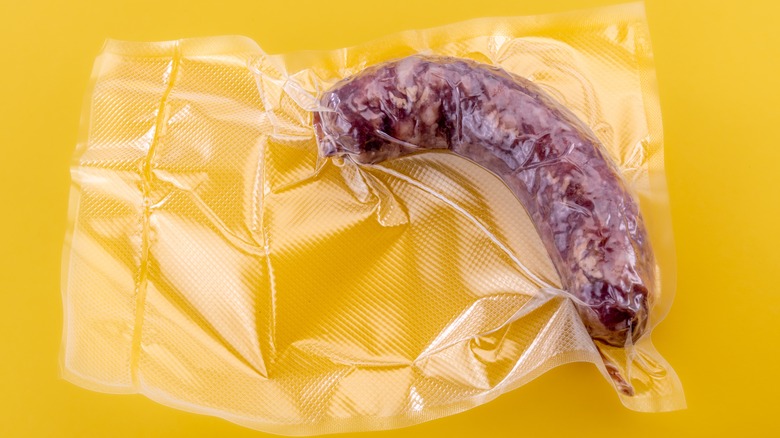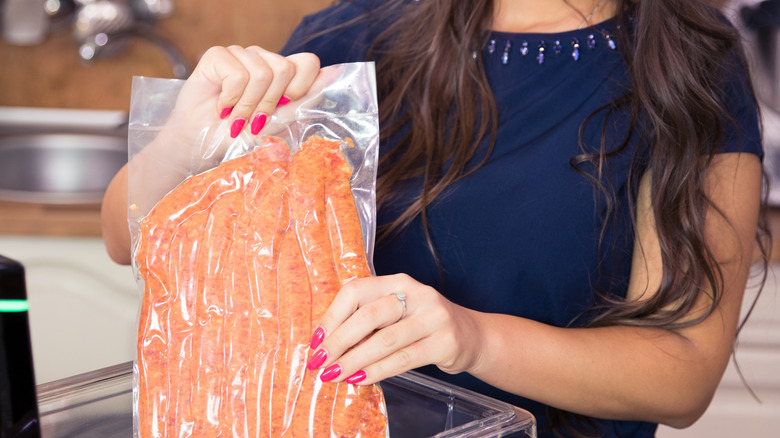Why It Pays To Sous Vide Sausage
Ah, sausage: The perfectly juicy and seasoned meat that even the pickiest of eaters can enjoy. Whether you're a fan of small but flavor-packed breakfast links or prefer a larger variation alongside caramelized vegetables at dinnertime, it seems there's no wrong time of day to dig into one of the world's most delicious and diverse meats. And with over 200 varieties of sausage in the U.S. alone, it's easy to find a family favorite.
For those busy cooks among us, frying up fresh sausages is an easy way to throw together a delicious dish since they usually come pre-seasoned and oftentimes pre-cooked. However, these convenient factors don't always prevent us from screwing up perfectly good meat. Most of us likely turn to an oiled skillet or grill for quickly heating up a fresh sausage and getting it to the needed internal temperature between 155 and 165 degrees Fahrenheit (per Healthline). However, when using these traditional methods, it can be easy to blast past the ideal temperature range and end up with overcooked meat. With such a small window for perfectly cooked sausage, this otherwise stress-free food can end up being quite exhausting to monitor.
So, if you're looking for a little more leisure in your life, specifically when it comes to cooking sausage, we have the best technique for you: Sous vide.
Sous vide keeps time on your side
If you're not familiar with sous vide, it's simply a method of cooking food — anything from fresh meat to raw vegetables — in a vacuum-sealed bag within a pot of below-boiling, temperature-controlled water (via Bon Appètit).
The reason that sous vide sausage is the superior preparation method is that it takes the time crunch out of cooking. As noted by Serious Eats, since the water is temperature-controlled with sous vide cooking, you can place your sausage in water of the ideal heat (between 140 and 160 degrees Fahrenheit), and it will stay that perfect temperature as long as you keep it submerged. It takes less than an hour for most sausages to cook through, and they can be kept perfect for a few hours in the water. However, that doesn't mean you should leave your meat cooking for more than a few hours. Serious Eats warns that after 4 hours, the meat will take on an unappealing "mushy" texture.
For the perfect consistency and ideal doneness, stick to about 45 minutes for smaller sausages, or a couple of hours for bigger sausages. Hopefully, this top tip will save you some cooking stress, and you'll have flawless sausages for many meals to come.

